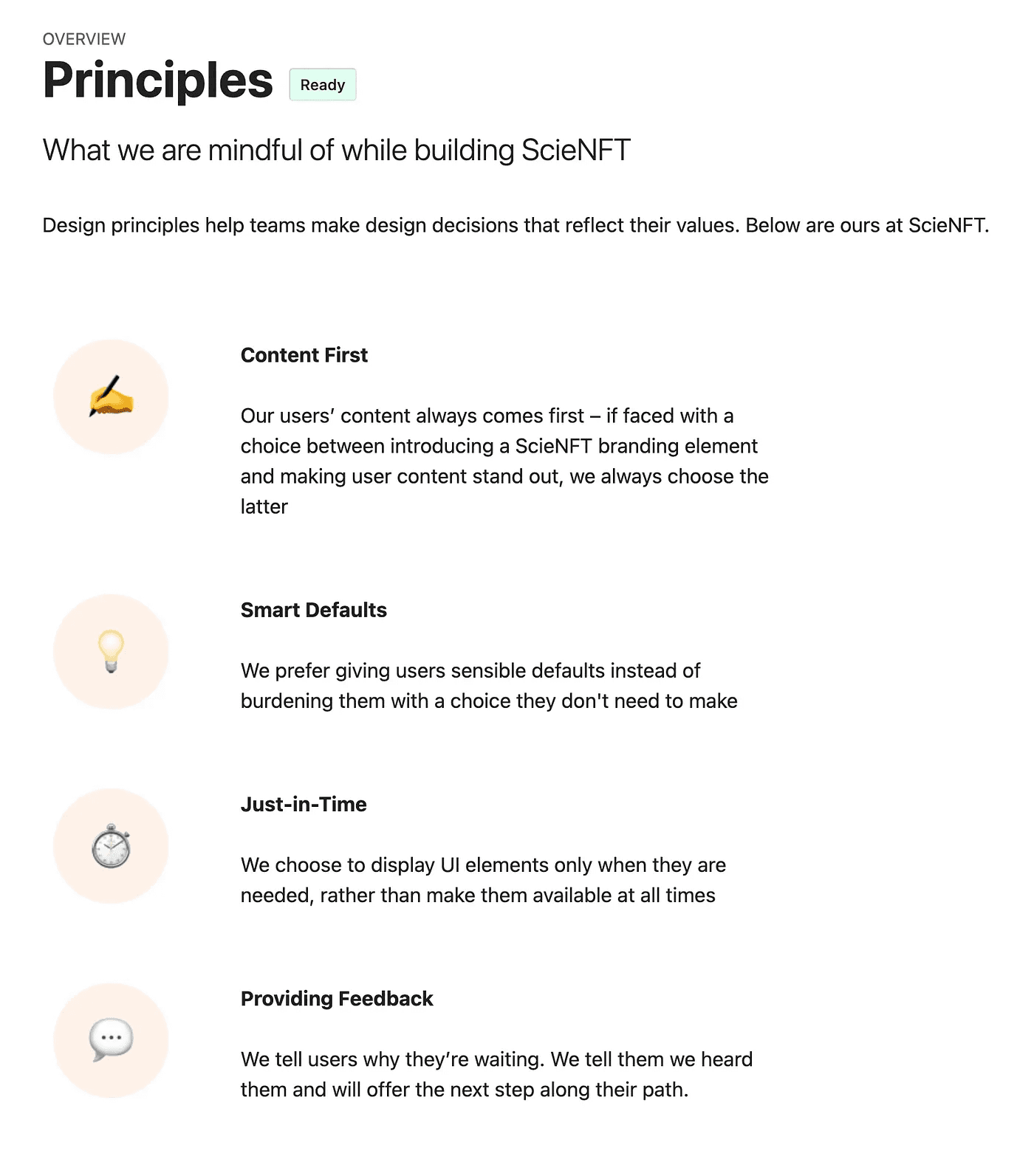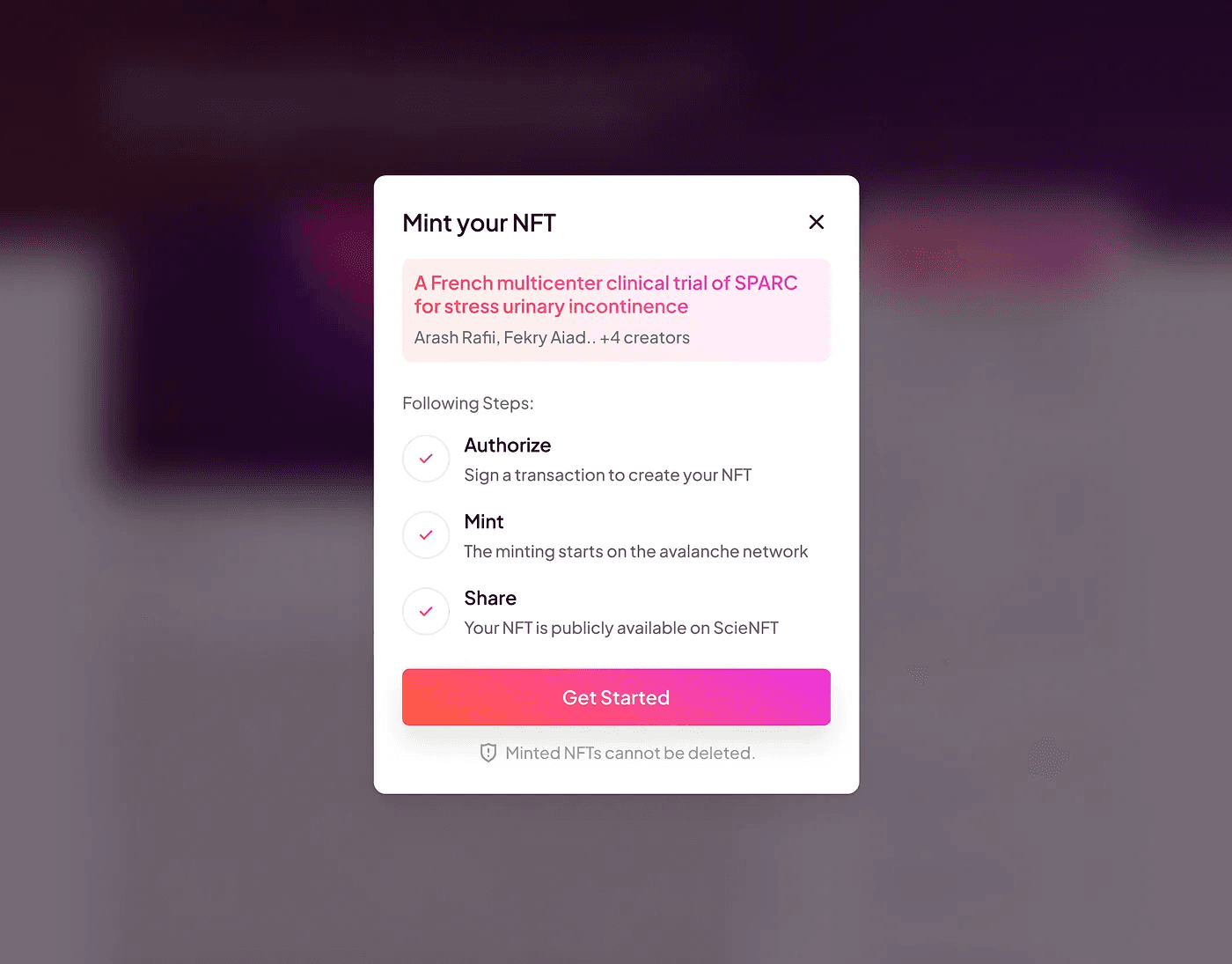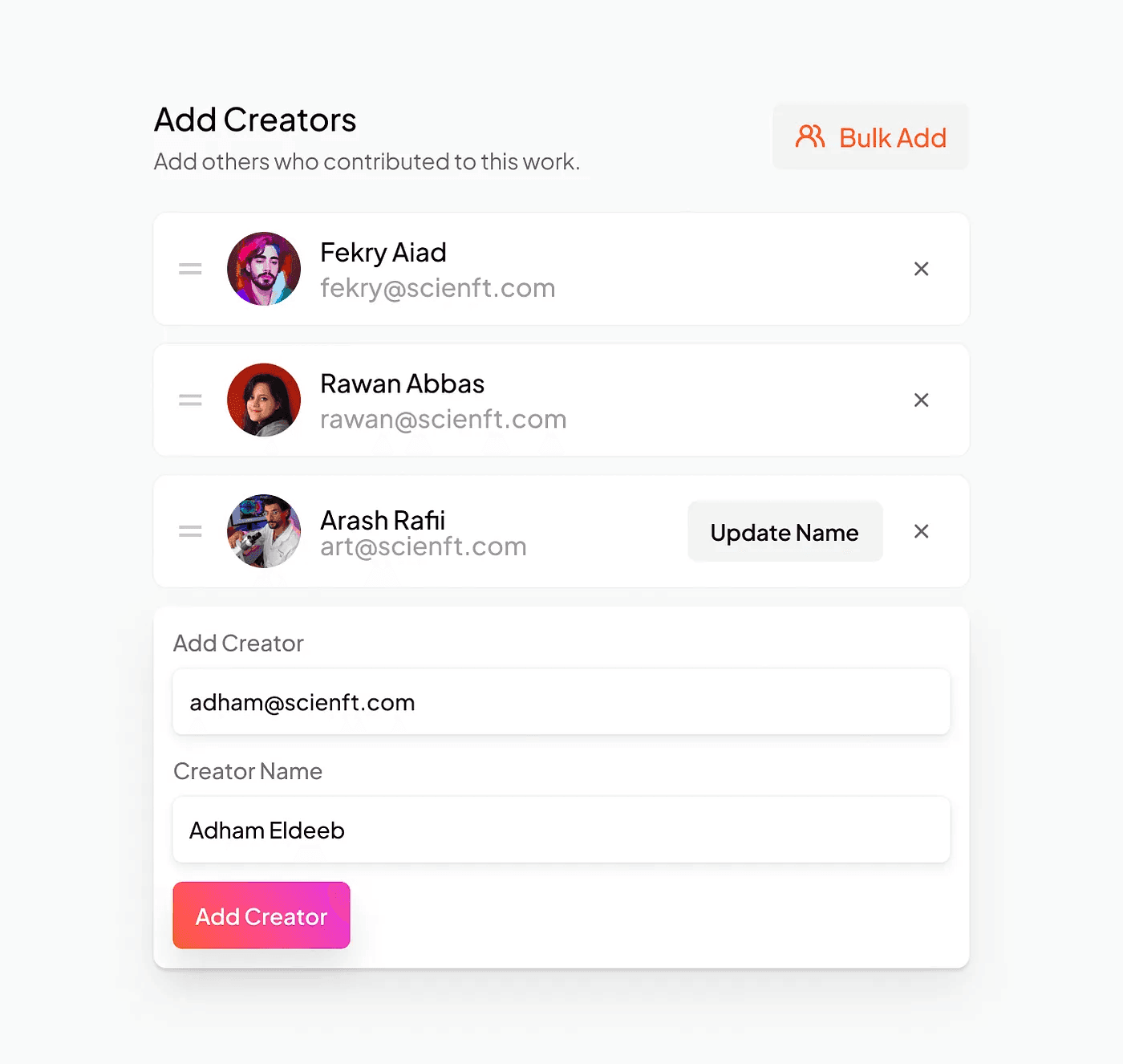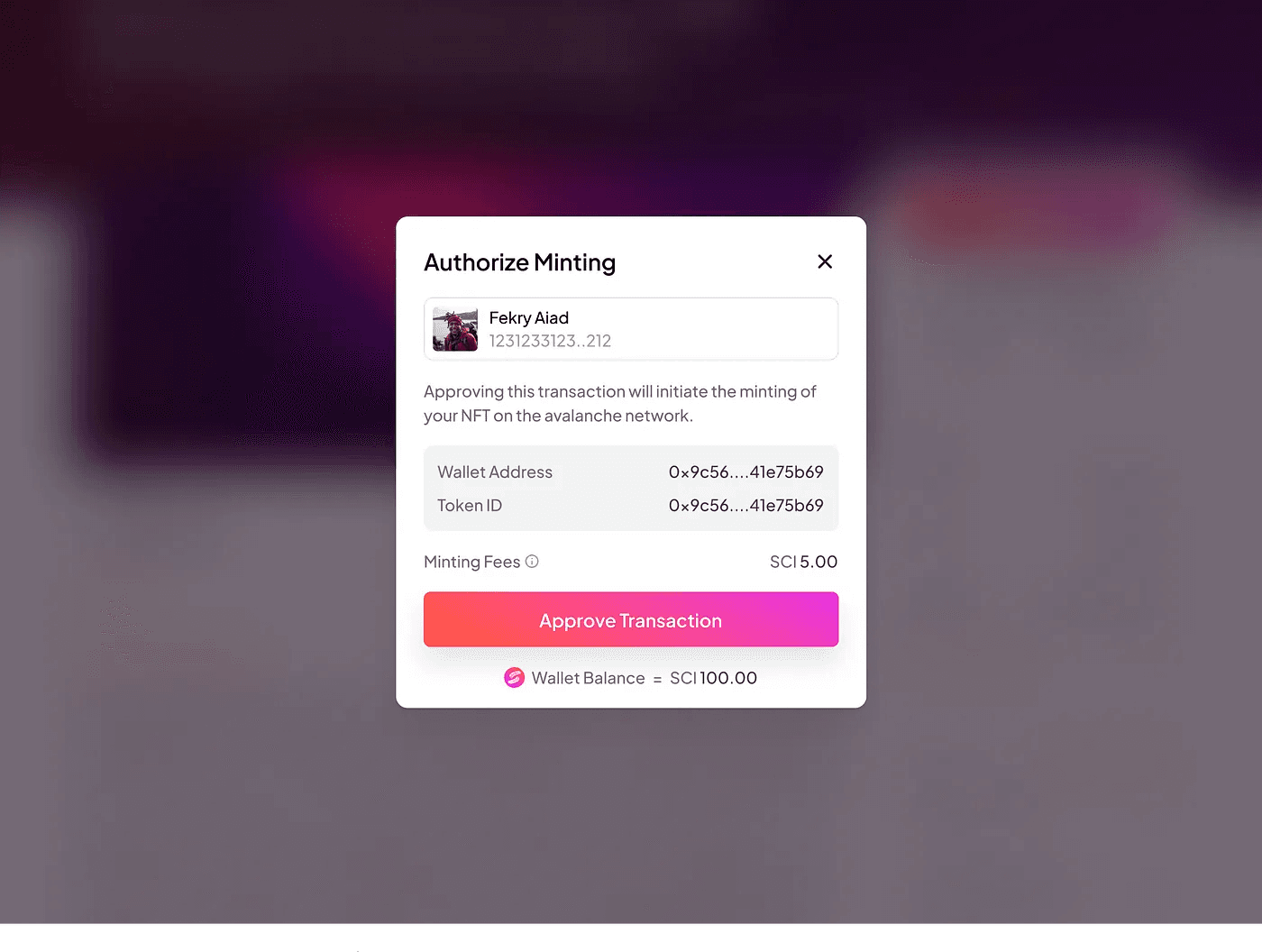Oct 16, 2023
5 min read
Hey there, I’m the co-founder and lead designer behind ScieNFT. Ever wondered what happens when you mix science, blockchain, and a modern user experience? You get ScieNFT, a platform that’s shaking up how scientists share their work and even get funded.
We’re using NFTs — yeah, those digital collectibles everyone’s talking about — to make science more open and fun.
I’ve had my fair share of late nights and “aha” moments while building this platform. And let me tell you, designing for web3 is a whole different game.
This article is all about the ups and downs, the design choices, and the tech challenges we jumped through to get ScieNFT off the ground.
So, if you’re a designer curious about the web3 space, or just someone who loves the idea of making science more accessible, stick around. I’m about to spill the beans on how we’re making it happen.
1. The inital Thrill: Designing for web3
When we first started shaping the idea of ScieNFT, I was pumped. Blockchain was the buzzword, and I was all in. I started sketching futuristic, holographic designs, thinking I was about to revolutionize science.

First mockup of ScieNFT Dec 2021
But then it hit me: our users aren’t crypto enthusiasts; they’re academics used to platforms like PubMed. That was my wake-up call. I realized blockchain is just a tool, and I needed to focus on solving real problems for our actual users. So, it was back to a blank canvas, but with clearer vision.
2. Back to the Figma: Rethinking the Design System
After realizing our real audience, it was back to square one. This time, the design philosophy was different:

So, I scrapped the old designs and started a new, focusing on a system that’s not just good-looking but also genuinely useful for our diverse user base.
3. The Web2-Web3 Balancing Act
The elephant in the room was this:
How do we make a blockchain product that doesn’t require a blockchain degree to use?
Let’s be real, educating users on blockchain is a tall order, and it’s not the hill I wanted ScieNFT to die on. Why?
First, it speeds up user onboarding.
Second, blockchain UX isn’t exactly user-friendly yet.

Educative step on how to mint/publish on the blockchain
So, the challenge was blending web2 familiarity with web3 innovation. We worked closely with our tech team to pull this off. The result? A platform where you can still do blockchain things — like digital signatures — but without the steep learning curve.
4. Customer Acquisition: Making Research Reach Its Creators
Here’s the thing about scientific publishing: it’s a team sport. Unlike Dribbble or Medium, where you usually have one or a few creators, a scientific paper often has around +10.

a paper on PubMed with 12 authors
So, how do you make sure everyone gets their due? Especially when you’re just starting out and those creators aren’t even on your platform yet.
We tackled this by building a flexible system. You can add creators who are already on ScieNFT or invite those who aren’t.

ScieNFT creator invitation component
But it doesn’t stop there. We also had to think about who really owns the research. In many cases, it’s not the individual researchers but the institutions and labs they belong to. So, we added a feature to assign beneficiaries, making sure the right people or entities get credited and benefit.
5. Building a Token Economy: The Role of SCI Tokens
Let’s talk tokens, specifically our SCI Tokens. You might wonder, why add tokens to a scientific platform? Well, it’s not just for the cool factor. Tokens can actually solve real problems.

They can incentivize users to engage more, review papers, or even fund research.
But how do you get people to actually use them? We had to make SCI Tokens more than just a gimmick. They needed to offer real value. So, we integrated them into various aspects of ScieNFT, from publishing to peer reviewing, even to funding opportunities.
6. The Power of User-Centric Design
Last but not least, let’s talk about the people who make it all worthwhile: our users. We had a leg up here, thanks to our Co-Founder & CEO who’s been in the science game for years.

ScieNFT Scientific Advisory Board
He helped us bring on board a scientific advisory panel — real heavy-hitters from top institutions. These aren’t just any advisors; they’re power users in the publishing world.It’s been a game-changer in keeping us connected to our users’ needs.
So there you have it — the rollercoaster ride of designing ScieNFT. From the initial thrills to the hard-earned lessons, it’s been one heck of a journey. But the most exciting part? We’re just getting started, and we want you to be a part of it.
If you’re a researcher, student, or part of an institution, we’ve built ScieNFT with you in mind. Don’t just take my word for it; give it a spin. Start publishing your research on ScieNFT and experience firsthand how we’re changing the game in scientific publishing.





